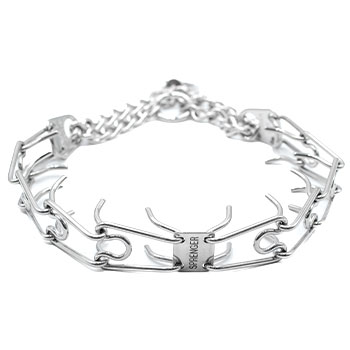April 26, 2011
I have a male Kerry Blue Terrier that has been in numerous fights.. Is there something I can do to make him realize that other dogs are not snacks?
Full Question:
Ed,I read your article on dog on dog aggression and I must say I agree with you 100%.
I have owned and bred Kerry Blue terriers for the past 20 years.
I find dogs I raise myself have very little dog aggression but when they do they are usually on leash and seam to be trying to protect me. I usually just use the leave it command and they fall back into heel position. I am VERY protective of my dogs because of the once bitten twice shy affect. Plus the fact the although my dogs won't start a fight they will most certainly finish it (and my dog will be blamed, he is a Kerry after all)
My concern is obedience trials. I am always worried that another dog will go after one of my dogs and we will end up with a life long problem. I always enter B so the dogs are a little better trained.
I have currently 6 Kerries and 2 pups I am keeping.
My daughter is raising one and I the other. The pups are in the house until they are at least 6 months old. Separate crates, separate rooms and separate trainers. I do allow them to play in the house or dog yard a few times a day supervised by one or both of us. This method seems to be working.
We have a Kennel and the older dogs are kept separate most of the time and I only allow 2 dogs at a time in the play yard.
I have 2 dogs, a dog and a bitch I got as older dogs with dog aggression problems as adults. They are 6-7 years old. The female has good obedience training and is manageable in most situations. We have managed to get her CD and Championship and are working her in Agility. I am very nervous about entering her in Open due to the out of sight and I am scared if a smaller dog broke and went up to her she would kill it. The male was raised in a kennel with no socializing and although he is a Champion, was involved in numerous dog fights his owners could not control. He does get along well with a couple of my more submissive females. Is there anything I can do to make this dog realize other dogs (Breeds) are not snack?
I would like to do obedience with him but he will not focus. If I use aggressive methods he shuts down and cringes (I think he was beaten as well) and he is not interested in food. I have tried motivational training and find he is OK if there are no distractions. Is there hope for this guy? He is good with people and kids but he really just seems to not care whether they are there or not. He is a little shy and always crouches when he meets strangers (like a submissive dog meeting an alpha) but with dogs he gives no warning and just attacks.
(Mastiff, Dachshund and pug) that I know of. None were killed but all needed stitches.
Thanks for your input.
Barb

 Ed's Answer:
Ed's Answer:
Male on male or female on female aggressions is the most common – most dogs that are aggressive to either sex are doing it on a fear based situation. These are usually dogs who have been attacked before and they take the approach that a good offense is better than a good defense.
The way to control this is either completely keep these dogs away from other dogs, or try to work through it.
If you want to try and work through it then you need to take the dog through a serious obedience program (normally local obedience classes are not going to work because the trainers don’t understand the principles of aggression and correction well enough). ALL OF THESE DOGS need to be worked with a prong collar and or an electric collar.
The very bottom line on the training is that IN THE END the dog must respect the resulting correction he gets if he is aggressive more than he wants to fight. In other words the correction needs to be at a level that the dog remembers. Many handlers cannot do this. They cannot correct at an effective level so they can't solve the problem.
In most sever cases dogs need to be worked with an electric collar. They need to be corrected for just looking at another dog not fighting with another dog. This work is beyond the scope of an email.
The way to control this is either completely keep these dogs away from other dogs, or try to work through it.
If you want to try and work through it then you need to take the dog through a serious obedience program (normally local obedience classes are not going to work because the trainers don’t understand the principles of aggression and correction well enough). ALL OF THESE DOGS need to be worked with a prong collar and or an electric collar.
The very bottom line on the training is that IN THE END the dog must respect the resulting correction he gets if he is aggressive more than he wants to fight. In other words the correction needs to be at a level that the dog remembers. Many handlers cannot do this. They cannot correct at an effective level so they can't solve the problem.
In most sever cases dogs need to be worked with an electric collar. They need to be corrected for just looking at another dog not fighting with another dog. This work is beyond the scope of an email.
65% (13 out of 20)
respondents found this answer helpful


Can't find what you're looking for?








